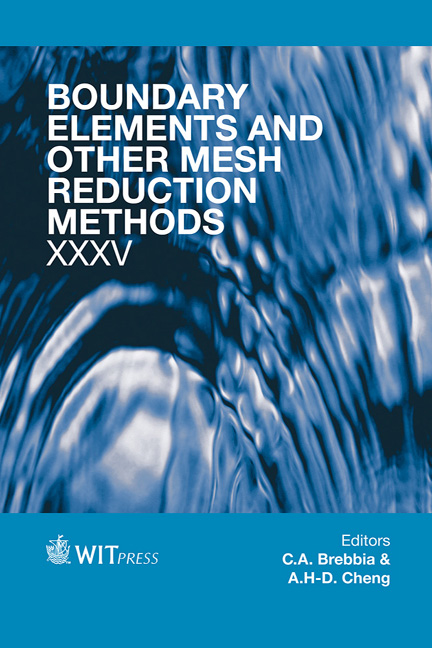Assessment Of The Spectral Properties Of The Double-layer Potential Matrix H
Price
Free (open access)
Transaction
Volume
54
Pages
11
Page Range
209 - 219
Published
2013
Size
225 kb
Paper DOI
10.2495/BEM130201
Copyright
WIT Press
Author(s)
N. A. Dumont
Abstract
The double-layer potential matrix H of the conventional, collocation boundary element method (CBEM) is singular, as referred to a static problem in a bounded continuum. This means that no rigid body displacements can be transformed between two different reference systems – and that unbalanced forces are to be excluded from a consistent linear algebra contragradient transformation. The properties of HT may become quite informative, as they reflect the topology (concavities, notches, cracks, holes) of the discretized domain as well as material non-homogeneities, which comes from the fact that local stress gradients can be represented by fundamental solutions only in a global sense. Symmetries and antisymmetries are also evidenced in N(HT) as well as the spectral properties related to simple polynomial solutions that one may propose as patch tests. In the usual implementations of the CBEM with real fundamental solutions, all eigenvalues λ of H are real, λ ∈ R, 0 ≥ λ < 1 for a bounded domain. This means that H is a contraction – a paramount mechanical feature that comes up naturally in the frame of a virtual work investigation of Kelvin’s (singular) fundamental solution and is resorted to in a simplified variational implementation of the boundary element method. Keywords: boundary elements, hybrid boundary elements, spectral properties, variational methods.
Keywords
boundary elements, hybrid boundary elements, spectral properties, variational methods





